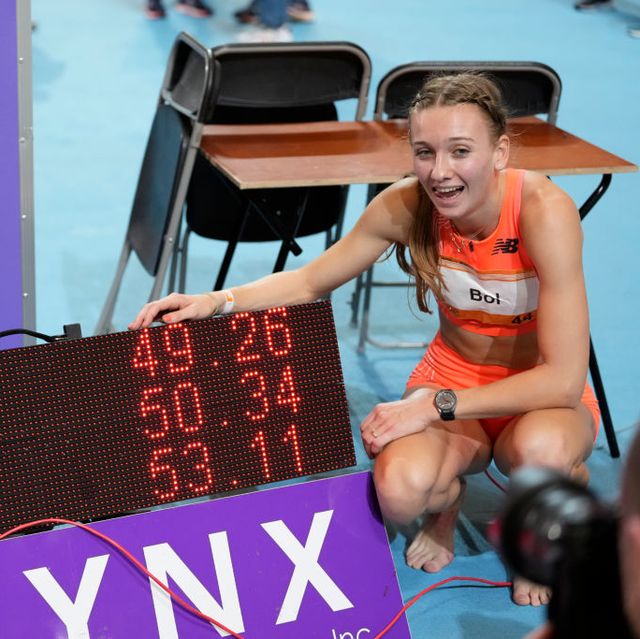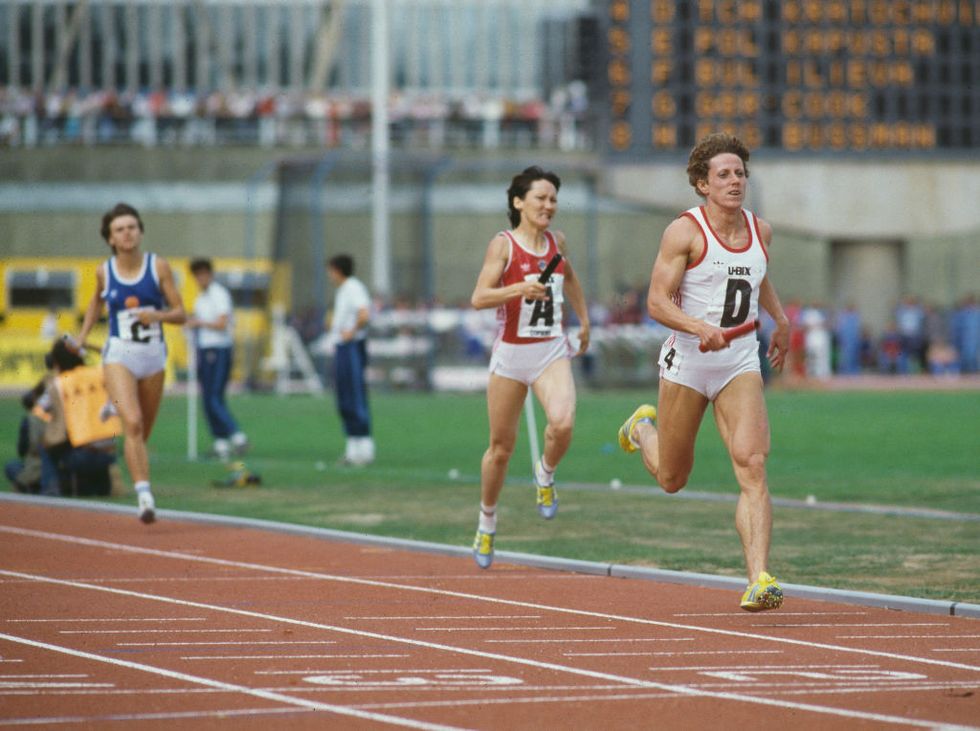14,959 Resting heart rate supershoes and bouncy tracks, that’s how long the world record for 400m indoors has stood – until last night, when superstar Femke Bol smashed it in front of a home crowd at the Dutch championships. And in just 49.26 seconds, Bol broke the oldest standing world record in track and field.
Not only was it a stunning performance from the 22-year-old, but it also wipes clean a record that many have long considered suspect, coming as it did at the height of state-sponsored doping programmes behind the Iron Curtain. The previous holder, Czech athlete Jamila Kratochvílová, never tested positive, and maintains her innocence, claiming that it was high doses of vitamin B12 that account for her astonishing performances and physique. Many would still raise a sceptical eyebrow.
However if Bol’s sprint performance has set a new standard, other long-standing records remain. Here are the five of the oldest - and if we might ever hope to see them broken.
Womens 800m: 1983
Kratochvílová’s name appears again - her record of 1:53.28 has stood since 26 July 1983 and is a frankly jaw-dropping margin ahead of any time run in the last 40 years. The closest in the current era is American star Athing Mu, who ran 1:55.04 at the Prefontaine Classic in 2021. Yet despite a clutch of Olympic golds, and a generational talent, that’s still nearly two seconds slower that the WR – a gap that on a track race would look enormous. With Mu and GB’s own Keely Hodgkinson battling for 800m dominance, it’s possible they may inch closer to the record, but it’s hard to believe it will fall any time soon – even though both are still very young, and have access to the next generation of track spikes.
Womens 400m: 1985
East German athlete Marita Koch positively hoarded world records during her career, with 16 outdoor and 14 indoor. But it’s her 47.60 in the 400m, set on October 6th 1985, that still stands. Second on the all-time list is Kratochvílová again, and in third stands Bahrainian sprinter Salwa Eid Naser, who has subsequently been banned for 2 years for missing doping tests. So again, at the very least there are question marks over the top marks.
In fact, Femke Bol stands a distant 35th in that list with 49.44, though she could surely smash that PB on current form. But to challenge Koch’s record is a huge leap for even the superlative current crop of sprinters, from Shanae Miller-Uibo to Sydney McLoughlin-Levrone (who like Bol is actually predominately a hurdler) and has rarely raced 400m flat.
Men’s discus: 1986
Another East German, Jürgen Schult, set the world record for the discus – 74.08m – on 6 June 1986. 36 years and 8 months later, no one has surpassed that mighty throw. It is the longest-standing record in men's track and field. However, the current generation of athletes does boast two superb talents who both feature in the all-time top 10: Swedish Olympic gold medallist Daniel Stahl and Slovenian Kristjan Čeh, so a duel between the two might just see a discus sail past that long-standing mark. Though it’s still a huge reach, it’s just possible this might be the most ‘achievable’ long-standing records.
Men’s hammer: 1986
Noticing a pattern with the dates? Yes, the Cold War era still casts a shadow on athletics. The USSR’s Yuriy Sedykh holds the hammer record with 86.74m, set on 30th August 1986. Only two men in history have ever thrown over 86m - Sedykh and fellow Russian Sergey Litvinov, also in 1986. A third, Ivan Ivan Tsikhan, beat that mark in 2005 but his throw was annulled by the IAAF in April 2014 due to doping sanctions.
Whistle-blower Grigory Rodchenkov, the former head of Russia's national anti-doping laboratory, wrote in his book that Sedykh was 'a huge steroid abuser' who benefited from (one of many) Soviet cover-ups, though Sedykh denied any doping. In a 2015, he claimed that the huge throws by Soviet athletes in the 80s were down to better coaching and to the USSR’s intensive scouting programme. Whatever the truth, it’s been a very long time since anyone even got within metres of his throw, and it seems unlikely to fall any time soon.
Women’s 100m: 1988
While the inimitable style and speed of Florence Griffith Joyner - aka Flo-Jo - is still revered in the US, there are plenty of question marks around her world records. When she ran an astonishing 10.49 on 16 July 1988, the wind reading it the stadium registered as 0.0 and thus it was counter as legal - despite all the field events at the same time registering a strong tailwind. year-old 3000m world indoor record broken from the time and it’s pretty clear that the wind reading was faulty, and the time should not have stood. However, with her next best time at 10.61, that still left Flo-Jo as the world record holder, so the argument seemed academic until 2021, when the two Jamaican greats, Elaine Thompson-Herah and Shelly-Anne Fraser-Pryce ran 10.54 and 10.60 respectively. Many now regard Thompson-Herah’s time as the ‘legitimate’ world record, and hope that she may still claim it outright.


















